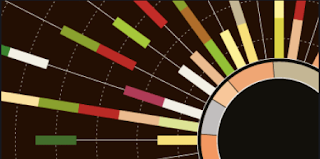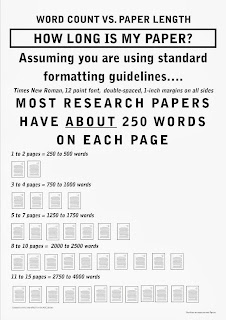To Weed or Not to Weed...?
The question of whether to keep certain materials in the library collection or to discard them is a question that vexes even the most seasoned librarians around the world. The answer comes from a combination of understanding the library collection, education and expertise in the field of Library Science, and an understanding of the way the materials are used by library patrons – in the case of my current school library, when we refer to “patrons”, we are referring to the students, parents, faculty, and staff.
The criteria we rely on here at my current school library are from the CREW method, a set of philosophies developed by the Texas State Library and Archives Commission. These methods are taught in foundational courses in any qualified Master of Library Science program. These methods help librarians determine the best course of action when it comes to whether or not an item has outlived its usefulness.
I became a librarian because I love books and information. In my career, I have had to overcome my own sentiments that would otherwise hold me back from weeding materials that are no longer appropriate to serve my library’s customers. In collection development, not only do I use my knowledge and understanding of the collection to purchase new materials and fill “holes” that I perceive in the collection, but also make sure that there are no grey areas of under-usage or “shelf-waste”. In my own mind, I had to get over the idea of basing my ideas of collection development on the book as an object and not focusing on the content of the collection that is needed and used by my library patrons.
I’m writing this article now, because I feel that it is important to address concerns that others may feel about holding on to library materials and what the costs associated with doing so entail.
The current school library’s Mission Statement is to empower students to be life-long learners, informed decision-makers, users of information technologies, enthusiastic readers, and practitioners of intellect. Bearing this in mind, think of how a poorly maintained collection could negatively impact the ability of the library to meet those goals. When taking all of that into consideration, it is clear that weeding is an important part of the library program. Here at my current school library, we were only able to weed around 1% of the collection over the summer, but the impact on the integrity of what remains is tangible.
Many librarians around the world consider the following principles, the Five Laws of Library Science from S.R. Ranganthan, as a foundation for operating their library:
1. Books are for use.
2. Every reader his book.
3. Every book its reader.
4. Save the time of the reader.
5. A library is a growing organism.
Keeping these principles in mind, my current school library uses the CREW Method which embodies those principles as well as considers the patron usage of a school library. CREW stands for Continuous Review, Evaluation, and Weeding.
“The CREW Method makes it easy to remove outdated and unused materials from the collection while also learning where the collection has gaps or needs new items.” Texas State Library and Archives Commission, Austin, Texas, 2012
When weeding, many factors are taken into consideration including, but not limited to:
--the demands of the library’s community of users – in the case of my current school library, K4 through Grade 12 students, faculty, and staff
--the area of the collection where the material is housed (Reference, Fiction, Non-Fiction, etc.)
--the copyright date
--the current condition of the material
--the circulation history of the material
--the availability of more suitable materials
--the ability of the library budget to replace damaged items or items in need of update
--the possible future usefulness of a particular item
--the availability of more current information on the Internet
--the ability of the library to acquire new materials,
--a set of criteria for weeding called the MUSTIE factors.
MUSTIE is the acronym for six negative factors that make books and other materials prime candidates for weeding.
Misleading (and/or factually inaccurate: Weed outdated editions and books that are no longer accurate. Pay special attention to areas where information has changed recently or where it changes rapidly, like in medicine and travel.
Ugly: (Self-explanatory)
Superseded (by a truly new edition or by a much better book on the subject): Especially for reference materials, test guides, and travel manuals, weed older editions. A current and useful school library does need to keep older editions for research value.
Trivial (of no discernible literary or scientific merit; usually of ephemeral interest at some time in the past): Weed older titles that were of fleeting interest or are about outdated popular culture.
Irrelevant to the needs and interests of your community: Even e-books should be expected to circulate or be used online at least once every few years. Also weed self-published e-books that are not circulating.
Elsewhere: The material or information may be obtained expeditiously Elsewhere. Especially for items available at no cost, such as through Project Gutenberg or an e-book available through an online public library, In my current school library, we try not to clutter the library catalog with material that is not being used or is out of date.
“A rule of thumb held by many library professionals is that about 5% of the collection be weeded every year. This allows for turnover of the collection every twenty years. While this doesn’t literally mean that no book that exists in the collection in the year, 2000 will still be there in 2020, even classic literature and perennially useful materials will generally become worn and tattered after twenty years of use and need to be replaced with a fresh copy. More important than raw numbers, however, is the librarian’s commitment to making weeding part of the regular duties and responsibilities that are addressed every week.” Texas State Library and Archives Commission, Austin, Texas, 2012
In general, the things that a librarian takes into consideration when weeding books are:
Poor content – outdated and obsolete information, trivial subject matter, mediocre writing style, inaccurate or false information, unused sets of volumes, repetitious series, superseded editions, material that contains biased, racist, or sexist terminology or views, unneeded duplicates, self-published or small press materials that are not circulating
Poor condition or contain attributes that are unappealing to patrons – Worn out, ragged items, poorly bound or poorly printed editions, rebound editions that are worn and shabby or have torn pages, items that are dirty, shabby, warped, bug infested, or otherwise marked up, mutilated, or ‘edited’ by patrons, books with very small print or poor quality pictures, scratched CDs or DVDs, brittle film or magnetic tape (in the case of video and audiocassettes), media that is beaten up from wear or has broken or missing parts, books with yellowed, brittle, torn, taped, or missing pages, books with dust jackets or cover art that is dated, especially on children’s and young adult books
Unused materials – Items that have not circulated within the past 3-5 years and are not being used for reference or in-house research for 5 years or more, duplicate copies that are no longer needed, regardless of condition, periodicals that are not indexed, periodicals that are available in full-text databases, unused volumes in sets or series, unneeded titles in subject areas that are less frequently used, materials on the ‘hot topics’ that were popular more than five years ago, more books than are needed on any single subject, formats that are no longer popular in your community, especially if the technology needed to use the format is no longer owned by people in the community, material that is no longer important to the collection because of changes in local demographics, school curricula, or other factors
More specific criteria can be used for different specialized areas. For example, Geography titles more than five years old are invariably misleading and inaccurate and according to the CREW guidelines, should be weeded. Most of our Geography materials in my current school library are far older than that, but we have kept them as they are not easily replaced. The older the title, the more inaccurate the content will be. Imagine how useless a title published before either of the World Wars is to a student today working on a research paper topic from the 20th century.
There is a misguided belief surrounding the school library that ‘anything is better than nothing’ and this belief has perpetuated the retention of many outdated and inaccurate nonfiction items, often to the detriment of the student. At best, providing a student with information that is no longer current can result in a lower grade on an assignment. Outdated information also provides a warped and inaccurate view of the subject and results in a lowered regard for the expertise of the librarian. Parents, teachers, and children will then question the validity of the collection. It is better to lack enough information on a topic than to have erroneous information. (Larson, 2012)
As I showed the faculty at the beginning of the year in my Library Orientation presentations this year, loads of information can be found using proprietary databases and public libraries on the Internet. Our school library must remain a valuable resource for students and not just a place to store books. It is not a book museum, literary archive, or store room, but a center for research and scholarship which all of our students, faculty and staff can utilize to enhance learning and instruction.
For further reading:
Sunlink Weed of The Month
www.tinyurl.com/weedofthe
American Library Association Factsheet on Weeding
www.tinyurl.com/alafactsheet15
Book: Baumbach, Donna J. and Linda L. Miller. Less Is More: A Practical Guide to Weeding School Library Collections. Chicago: American Library Association, 2006.





















